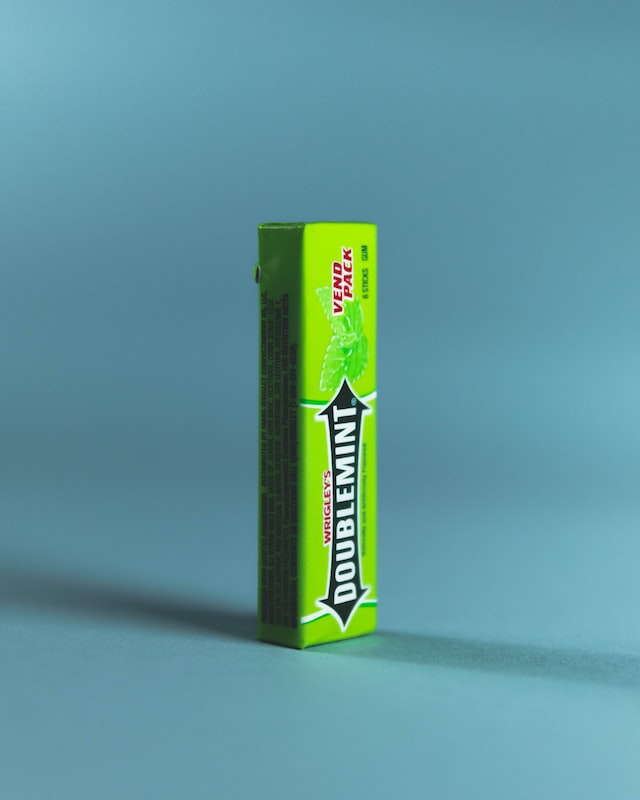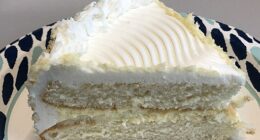Bubble gum is typically softer and sweeter than chewing gum, and it is also more likely to stick to your teeth. Chewing gum is designed to be chewed for an extended period of time in order to help freshen your breath and clean your teeth.
What is chewing gum?

Chewing gum is a type of soft, malleable substance that is intended for chewing but not swallowing. It is typically made from a combination of a gum base, sweeteners, flavorings, and other additives. Chewing gum is usually flavored and can come in various forms such as sticks, pellets, or coated tablets.
Chewing gum is primarily used for its pleasurable taste and the act of chewing itself, which can help relieve stress, freshen breath, or satisfy an oral fixation. It is commonly sold as a confectionery product and is available in a wide range of flavors, including mint, fruit, and bubblegum.
When chewed, the gum softens and becomes more pliable, allowing the chewer to manipulate it with their jaws and teeth. However, chewing gum is not meant to be swallowed, as it is generally indigestible and can potentially cause digestive issues if ingested in large quantities.
Chewing gum has a long history and has been enjoyed by various cultures for centuries. Over time, it has undergone advancements in production techniques and flavor options, making it a popular and widely consumed product around the world.
What is bubblegum?
(Photo by Pete Alexopoulos on Unsplash )

Bubblegum is a type of chewing gum that is specifically designed to be blown into bubbles. It is known for its stretchy and elastic texture, which allows users to inflate it into large bubbles that can be popped or manipulated. Bubblegum typically has a sweet and fruity flavor, often resembling fruits like strawberry, watermelon, or grape.
Unlike regular chewing gum, bubblegum is formulated with ingredients that enhance its elasticity and ability to hold its shape when blown into bubbles. This includes specific gum bases and additives that give it the desired texture and stretchiness. The flavors used in bubblegum are also distinct, aiming to provide a pleasant and enjoyable taste experience.
Bubblegum is often enjoyed by children and is commonly found in colorful packaging with appealing designs. The act of blowing bubbles with bubblegum can be entertaining and fun, making it a popular choice among young individuals.
It is important to note that while bubblegum is meant to be chewed and blown into bubbles, it should still not be swallowed, as it shares the same indigestible properties as regular chewing gum. Proper disposal after use is recommended to avoid any potential issues.
Bubblegum Vs. Chewing gum – Key differences
Bubblegum and chewing gum are two distinct types of gum with notable differences. Here are some key differences between bubblegum and chewing gum:
Texture: Bubblegum is known for its stretchy and elastic texture, specifically formulated to be blown into bubbles. Chewing gum, on the other hand, has a more standard, non-elastic texture that is suitable for continuous chewing.
Purpose: Bubblegum is primarily designed for the specific purpose of blowing bubbles, providing entertainment and fun. Chewing gum, on the other hand, is intended for general chewing and oral stimulation, often used for freshening breath or as a pleasurable activity.
Flavor: Bubblegum typically features sweet and fruity flavors, aiming to provide an enjoyable taste experience. Chewing gum, on the other hand, comes in a broader range of flavors, including mint, fruit, and various other options.
Composition: Bubblegum and chewing gum may have different compositions. Bubblegum is formulated with specific additives and gum bases that enhance its elasticity and ability to hold bubbles. Chewing gum, on the other hand, has a composition that focuses more on prolonged chewing without the specific goal of bubble-blowing.
Target audience: Bubblegum is often associated with children and is marketed with colorful packaging and appealing designs. Chewing gum, on the other hand, has a broader target audience and is used by people of various age groups.
It’s important to note that while there are distinct differences between bubblegum and chewing gum, both types should not be swallowed, as they share similar indigestible properties. Proper disposal is recommended after use.
The history of bubblegum
The history of bubblegum dates back to the late 19th century when early forms of chewing gum were first created. However, it wasn’t until the early 20th century that bubblegum as we know it today began to emerge.
In 1906, a confectioner named Frank H. Fleer developed a gum called Blibber-Blubber. Although it had some bubble-blowing potential, the gum’s consistency and lack of flavor prevented it from being a commercial success.
It wasn’t until 1928 when Walter E. Diemer, an accountant at the Fleer Chewing Gum Company, accidentally stumbled upon a formula that would revolutionize bubblegum. While experimenting with gum recipes, he created a batch with unique stretchiness and improved texture. This became the first successful bubblegum, named Dubble Bubble.
Dubble Bubble became an instant hit and marked the beginning of the bubblegum era. The gum gained popularity due to its ability to blow large bubbles and its fruity flavor. It was also the first gum to be sold in individually wrapped pieces.
Over the years, various companies introduced their own bubblegum brands and flavors. In 1951, Bazooka bubblegum was launched, featuring a comic strip wrapper and a distinctive pink color. It quickly became a beloved brand among children.
The 1970s and 1980s saw the introduction of additional bubblegum brands, each with its own unique flavors and marketing strategies. Companies like Hubba Bubba, Bubble Yum, and Bubblicious gained popularity and expanded the bubblegum market.
Today, bubblegum continues to be a favorite among children and adults alike. It is available in a wide array of flavors and packaging options. Modern bubblegums often come in sugar-free varieties and incorporate advancements in texture and flavor technology.
The evolution of bubblegum has transformed it from a mere chewing gum variant to a distinct type of gum known for its stretchiness and bubble-blowing capabilities. Its history showcases the creativity and innovation of gum manufacturers in meeting the demand for an enjoyable and entertaining chewing experience.
Health concerns of chewing gum and bubble gum
While chewing gum and bubble gum can be enjoyed in moderation, it’s important to be aware of potential health concerns associated with their consumption. Here are some considerations:
Sugar content: Traditional chewing gum and bubble gum often contain high amounts of sugar, which can contribute to dental issues such as tooth decay and cavities. Opting for sugar-free gum can help mitigate this concern.
Jaw discomfort: Excessive or prolonged chewing of gum can lead to jaw discomfort or muscle fatigue, particularly if you have existing jaw issues or temporomandibular joint (TMJ) problems. It’s advisable to take breaks and avoid excessive gum chewing.
Digestive issues: Swallowing gum, whether it’s chewing gum or bubble gum, is generally not recommended. While it passes through the digestive system without being fully digested, swallowing large amounts or swallowing gum frequently can potentially lead to digestive discomfort or intestinal blockages.
Artificial additives: Some chewing gums and bubble gums may contain artificial sweeteners, flavors, and additives. While these ingredients are considered safe for consumption in moderate amounts, individuals with specific sensitivities or allergies should be cautious and read the ingredient labels.
TMJ sensitivity: Individuals with pre-existing TMJ disorders or jaw pain may find that chewing gum exacerbates their symptoms. It’s best to consult with a healthcare professional if you have any concerns or experience discomfort.
Potential for overconsumption: Chewing gum can be an enjoyable habit, but excessive consumption may lead to relying on gum as a substitute for healthy habits or proper oral hygiene practices.
As with any food or substance, moderation is key. It’s essential to listen to your body and be mindful of your personal health needs and sensitivities. If you have specific concerns or medical conditions, it’s recommended to consult with a healthcare professional for personalized advice.
Featured Image By – Hunter Newton on Unsplash








